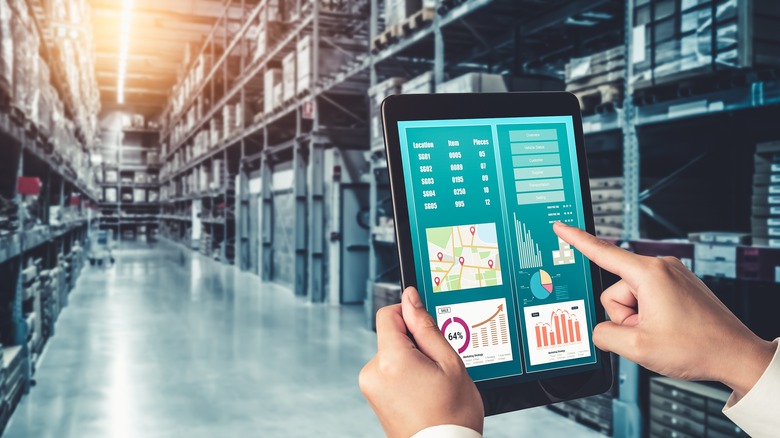How Grocery Stores Use Technology To Know What's Selling
The pandemic served as a catalyst for technological innovation in restaurants, supermarkets, and grocery stores. Primarily this consisted of stores rolling out contactless ways to shop, such as when Walmart introduced a drone delivery service. Most recently, the New York Post detailed how one Japanese robotics company restocks shelves by robots and intends to expand into the United States. The TX SCARA currently replaces bottles and cans on store shelves in Japan, though in cases where the robot drops something, a worker with virtual reality glasses can take control.
TechCrunch has reported on the technological trend more broadly. Grocery tech is expected to become a growing industry that will attract more venture capitalists. However, these stories may create the impression that grocery stores have been without any technological underpinnings. This is not true. As The Grocery Store Guy explains, many grocery stores use and rely on inventory management software. Without such tools, the efficiency of grocery stores would plummet.
How inventory management software works
Whoever came up with the term "inventory management software" is one of the few blessed people who actually named a piece of technology in a readily accessible manner. Inventory management software is — wait for it — software that manages inventory. Facetiousness aside, IBM categorizes the three main areas of inventory management as purchasing inventory, storing inventory, and profiting from inventory. With this definition, the robots featured in the New York Post could be classified as inventory management robotics commanded by inventory management software.
Grocery Corridor breaks down how most grocery stores currently implement technology to manage inventory. Grocery stores track the number of units in stock and, in some cases, automatically place orders to refill products to pre-ordained levels. With online shopping, these systems keep track of what goods are available for purchase, and it is unnecessary to hire a worker to manually update websites after each shipment. However, these kinds of systems can not stop shoplifting, and workers usually check inventory once or twice a year.

